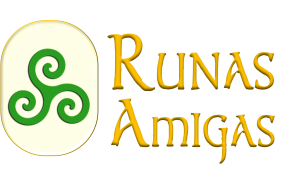THE ORIGIN OF RUNES
The mistery of Runamo
Runamo is a place near Brakne-Hoby, Blekinge, Sweden. On a dyke of dolerite rock, for centuries there were strange writings, which by local legends have always been considered Runes.
Their extension is quite vast, we are talking about a 22 meters long writing strip, and is formed by signs engraved in the granite rock.
In the twelfth century, when the Runes were still very popular in Sweden, the interpretation of the sequence was perplexing. Local traditions stated that the Runes told the results of the great battle of Bravoll, which in about 700 a.c. saw the armies of Harald Hilditonn and Sigurd Hring opposing each other.
A century later, the Danish medieval historian Grammaticus Saxo spoke of the place, describing it as “a cliff with a path… decorated with strange letters”. Precisely, the path that goes up from the shore is bordered by two rows of engravings. And he told how the Danish king Vladimir the Great asked his sages to study the inscription. They reported the signs on tablets, but without being able to decipher them.
The research continued over the centuries, without major success.
In 1833, the Royal Society of Denmark organized an expedition to unravel the mystery, led by one of the greatest luminaries of the time, Finnur Magnusson of the University of Copenhagen. He spent 10 months studying the Rune sash, without getting any results, and just when he was about to give up, he had an intuition: the Runes were linked together, and were written from right to left. And so, in a state that we could define as a trance, he began to recognize and translate them.
A refined poem then appeared, composed of long verses of Eddic metrics (Fornyrdislag). The most important part, translated, sounded like this:
“Hildekind conquered the kingdom
Gardar carved the Runes
Olaf was sworn in
May Odin sanctify magic
May King Hring be reduced to dust
The Elves, who love the Gods,
They have to leave Ola Odin and Freyr
And the Ace race
It must destroy
To destroy
Our enemies
Given to Harald
The great victory”.
It was none other than the description of the battle of Bravoll, exactly as local legends said.
Magnusson’s discovery was met with great clamor and enthusiasm.
But just 2 years later, some geologists resumed the research, and showed that the signs that were thought to be engraved were nothing more than natural ribs of the rock, carved out by Time.
Nobody dared to criticize or belittle the Magnussons’ work.
Look at what Nigel Pennick comments in his book “Rune Magic”: “it is important to ask how such a witty example of Old Norse poetry could have been extracted from natural rocky motifs. Because it cannot be relegated to the rank of a vulgar hoax. Magnusson was highly respected, his skills and honesty were never questioned, and it was clear to everyone that he was sincere and that he had had a genuine intuitive penetration of the message of the rock “.
And then he concludes: “finally the question remained unresolved. The materialistic science of the 1830s had no time to devote to shamanic psychology and immaterial physical bonds. Nobody pointed out that, even if the geologists had proved that the inscriptions were natural, this did not prevent them from being interpreted as Runes ”, and that, as such, they had their own meaning and significance.
But it doesn’t stop there.
Starting from this event that went down in history, many scholars interested in Nordic mythology gradually approached the mystery of Runamo, going there to see the signs and to check Magnusson’s translation. And comparing the engravings that they themselves had found, with those reported by Magnusson, they realized that the Runes had changed, that the meaning of the inscriptions was no longer the same!
And this has been repeated over the years, until today. Indeed, many argue that their message, like their appearance, changes with the weather, the hours of the day and the days of the year, depending on the position of the Sun and the mental state of the beholder.
The Runes seem to reveal themselves according to the observer’s state of consciousness.
We can undoubtedly say that it is a “strange” phenomenon, which perfectly expresses the essence of the inner discovery that lies at the heart of the runic mysteries.
This is why we strongly maintain that the Runes are Universal, they are a Sacred Code, one of the Languages used by Nature, and that, as such, they connect us with the intimate Essences and with the Cosmos.
